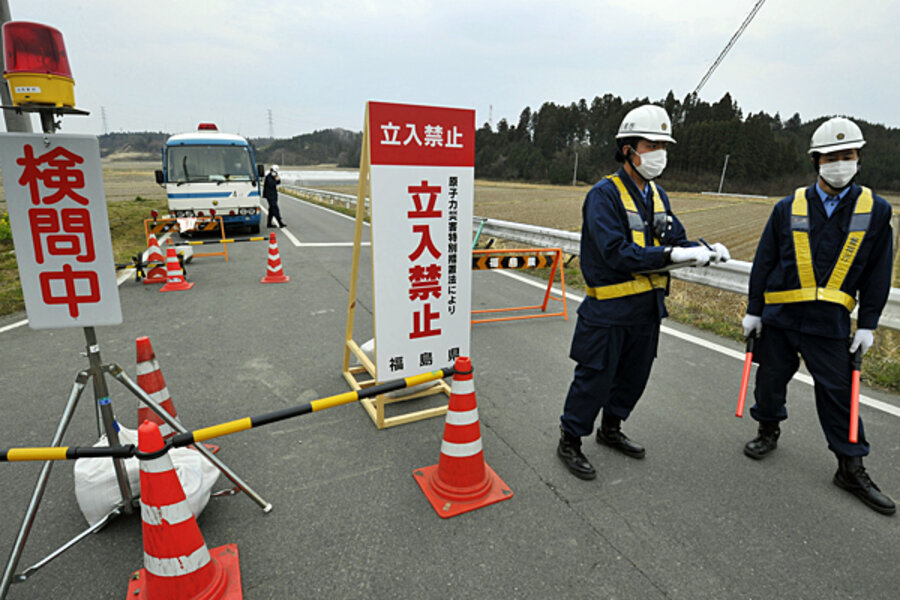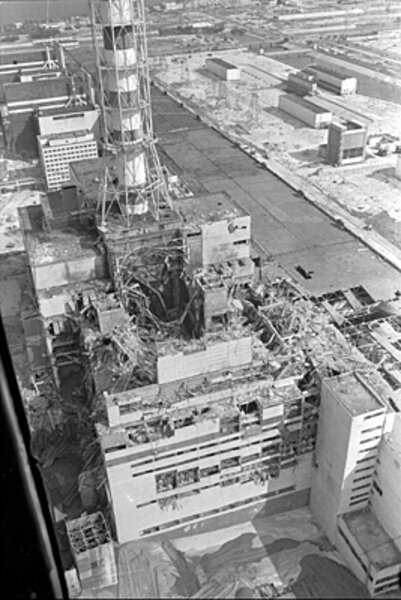Why Fukushima isn't Chernobyl, despite rise in crisis level
Loading...
| Tokyo
Japan on Tuesday raised the severity rating at the stricken Fukushima Daiichi nuclear power plant to level 7, the most serious on the international scale and the same rating that was given 25 years ago to Chernobyl, as aftershocks close to the facility heighten safety concerns.
Experts are not agreed, however, as to the extent of the radiation leaks and whether it can yet be said to be as bad as the 1986 disaster in Ukraine.
The Nuclear Safety Commission of Japan and the Nuclear Industrial Safety Agency (NISA) held a joint press conference today to announce they were raising the rating at Fukushima from its current level 5 to level 7. A little more than one month has passed since a magnitude 9.0 earthquake struck the northeast coast of Japan and triggered a 30-foot tsunami that first damaged the plant.
The International Nuclear and Radiological Event Scale defines a level 7 accident as a "major release of radioactive material with widespread health and environmental effects."
Severity rating raised
Shortly after Japan raised the crisis level, Prime Minister Naoto Kan told citizens in a televised address not to panic. "Right now, the situation of the nuclear reactors at the Fukushima plant has been stabilizing step by step. The amount of radiation leaks is on the decline," he said. "But we are not at the stage yet where we can let our guards down."
Lauri Myllyvirta, who is working with Greenpeace Japan to assess the potential danger of the situation at the nuclear plant, says this is a wake-up call. “This is recognition of the reality of the situation that is finally being admitted to: that Fukushima is on a level that must be taken seriously,” he says.
But while the threat level is on par with Chernobyl, the radiation contamination is not. NISA reported that the amount of radiation that has leaked from Fukushima is 1/10th of what occurred at Chernobyl.
“I don't know where they got that [estimation] from," says Yoshiaki Oka, a professor of nuclear engineering at Tokyo’s Waseda University, who believes even NISA's figure is an overestimation.
Professor Oka says he believes the idea that Fukushima is as bad as the world’s worst nuclear disaster is “completely wrong” and that according to his estimates the leak of radiation, so far, from the Japanese plant is about “1/100th of that of Chernobyl."
Differences with Chernobyl
There is a key difference, he says, in the type of explosions at Fukushima and Chernobyl. At the Ukrainian plant 25 years ago, he explains, a series of operating errors and misjudgments resulted in an explosion and fire releasing toxic smoke that contained parts of the fuel rods and graphite particles into the atmosphere. At Fukushima, however, there have only been steam explosions.
Also, there have been no reported deaths so far due specifically to radiation at Fukushima, where at least five workers have died from other operational mistakes. The initial explosion at Chernobyl killed two workers, and then 28 of the firemen and emergency clean-up workers died in the first three months after the explosion because of radiation exposure.
Still, Oka concedes that it is very difficult to tell exactly what percent of the fuel rods have melted at Fukushima, and therefore how much radiation has actually leaked.
"Fukushima has its own unique risks, but comparing it to Chernobyl is going too far. Fukushima is unlikely to have the kind of impact on the health of people in neighboring countries, the way Chernobyl did," nuclear specialist Kenji Sumita at Osaka University told Reuters.
Geography exacerbated the Chernobyl incident. While that radiation spread to the Ukrainian countryside and blew over Europe, much of the Fukushima radiation has dispersed over the Pacific Ocean. Greenpeace’s Mr. Myllyvirta says the Fukushima crisis would be much worse if Japan was a landlocked country.
But Japan must contend with its earthquake-prone geology. Two major aftershocks, a magnitude 7.1 quake on Thursday evening and a magnitude 6.6 quake on Monday, were both centered in Fukushima Prefecture, near the unstable nuclear plant. With the Japan Meteorological Agency predicting more large aftershocks, there is concern that a large tremor could further damage the facility.
"After Monday’s earthquake TEPCO said it took 50 minutes to restore power for the cooling system to the reactors," says Myllyvirta, pointing to the already weakened concrete reactor containment vessels, in particular. “And 90 percent of the radioactivity is still inside the plant, so there is still the possibility of far higher releases."






